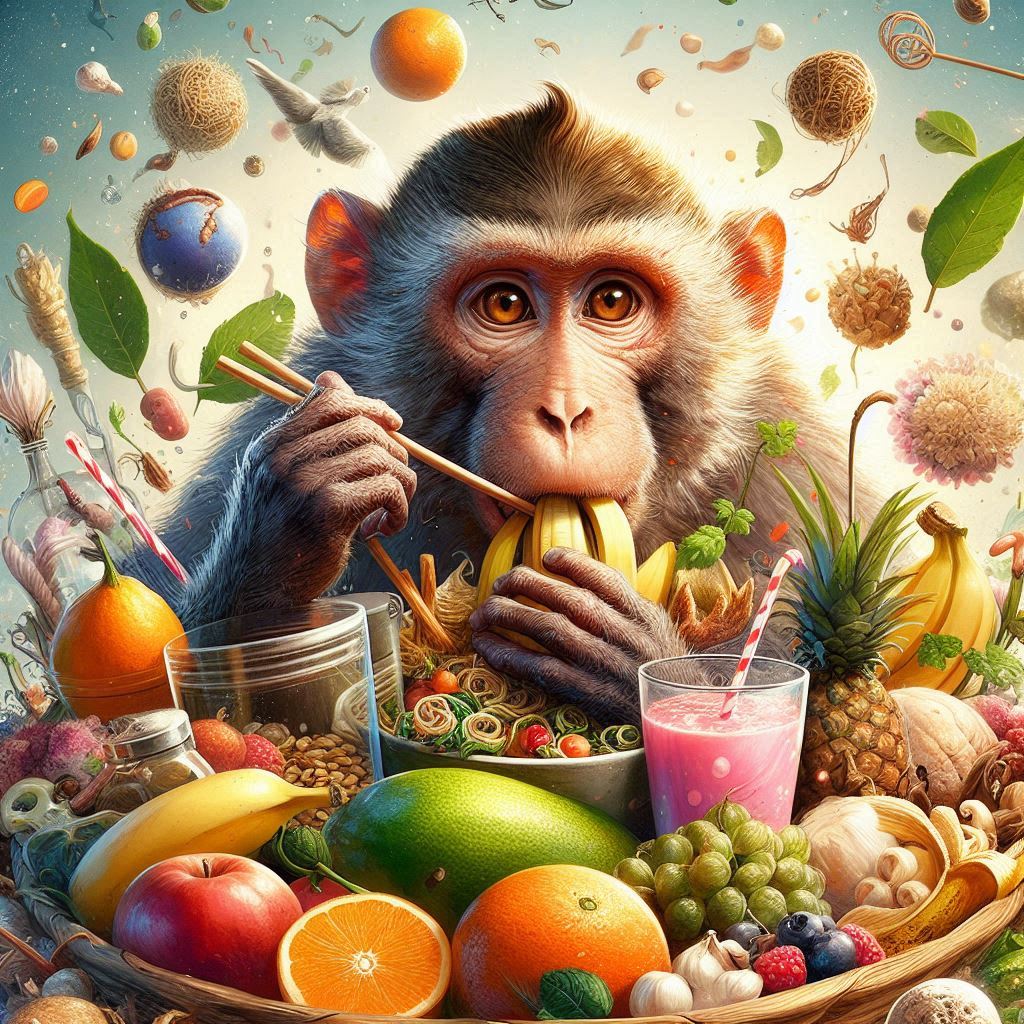
What Do Monkeys Eat? A Look at Their Natural Diet
Share
What Do Monkeys Eat? A Look at Their Natural Diet
Monkeys are some of the most fascinating creatures on the planet. Their intelligence, agility, and social behavior make them stand out in the animal kingdom. But what exactly do these primates eat? Understanding a monkey’s diet is crucial not only for their conservation but also for ensuring their well-being in captivity. In this blog post, we’ll take a closer look at what monkeys eat in the wild and how their diets differ across species.
Monkeys: Omnivores with Diverse Diets
Monkeys are primarily omnivores, meaning they eat a variety of foods, including fruits, vegetables, seeds, insects, and small animals. The specific diet of a monkey depends largely on the species, their habitat, and the availability of food. While some monkeys are more herbivorous, others have a more varied diet that includes animal protein. Let’s break down some common food groups in the monkey diet.
1. Fruits and Berries
Fruits are a staple in the diet of most monkeys, providing them with essential vitamins and sugars for energy. Many monkeys forage for ripe fruits, berries, and nuts that grow in the trees of their natural habitat. Some examples of fruits commonly eaten by monkeys include:
• Bananas: These are a favorite among many monkey species, including capuchins, macaques, and howler monkeys.
• Mangoes: These juicy, tropical fruits are highly nutritious and are eaten by monkeys in forests around the world.
• Papayas, figs, and berries: These fruits offer a variety of nutrients and sugars, and monkeys enjoy foraging for them in their forest homes.
2. Leaves and Flowers
While fruits are important, many monkeys also rely on leaves, flowers, and plant matter for sustenance. These foods are often lower in calories but are rich in fiber, vitamins, and minerals. Some monkeys are better adapted to eat leaves than others. For instance:
• Howler monkeys are known for consuming large amounts of leaves as their primary source of food. Their stomachs are specially designed to digest tough leaves and other fibrous plant materials.
• Colobus monkeys also have specialized stomachs to process leaves, particularly those found in their African forest habitats.
3. Nuts and Seeds
Nuts and seeds are a key source of protein and fats for many monkey species. Some monkeys, like the squirrel monkeys and capuchins, are particularly skilled at cracking open nuts to access the nutrient-rich insides. Seeds from various fruits also serve as a valuable food source. In addition to energy, these foods help support the monkeys’ growing needs, especially for species with higher metabolic rates.
4. Insects and Small Animals
Some monkey species supplement their diet with animal protein, which helps them obtain additional nutrients such as protein and essential fats. The consumption of insects, eggs, and even small vertebrates is typical for many monkeys. Examples include:
• Tamarins and marmosets: These small monkeys often forage for insects, spiders, and small reptiles, which provide them with vital nutrients.
• Capuchin monkeys: These versatile primates are opportunistic feeders and will eat small vertebrates and insects when available, making them skilled hunters.
5. Bark and Sap
In addition to the more common foods listed above, certain species of monkeys consume tree bark and tree sap. For instance, howler monkeys sometimes eat tree sap when it’s available, and proboscis monkeys are known to chew on bark as a supplemental food source. These foods can be tough to digest but are important when more typical food sources are scarce.
6. Water and Hydration
Like all animals, monkeys need water to survive. They typically obtain hydration from a variety of sources, including fresh water streams, dew, and the moisture found in the fruits and plants they consume. However, some species are more adept at finding water than others. For example, monkeys living in dry areas may need to be more resourceful, drinking from tree hollows or water-rich plants.
How Monkeys Forage for Food
Monkeys are known for their exceptional problem-solving skills, and these abilities are crucial when it comes to foraging for food. Many monkeys live in forested areas where food can be abundant but also hard to reach. They use their intelligence and dexterity to gather food in a variety of ways:
• Capuchin monkeys are famous for using tools, like rocks or sticks, to crack open nuts or access hidden food.
• Spider monkeys use their long arms and prehensile tails to swing through trees and reach high branches filled with fruits and leaves.
• Marmosets and tamarins often forage in the underbrush, using their sharp claws to scrape sap or peel bark from trees.
Monkey Diets in Captivity vs. the Wild
While monkeys in the wild have access to a variety of natural foods, monkeys in captivity are often given a carefully controlled diet to ensure they receive the proper nutrition. This diet may include fruits, vegetables, specially formulated monkey food, and sometimes small amounts of animal protein.
In zoos and sanctuaries, monkeys may be provided with:
• Fresh fruits and vegetables
• Leafy greens
• Commercial primate pellets
• Protein sources like eggs, insects, or cooked meat
It’s important for captive monkeys to have a balanced diet to mimic their natural foraging behaviors and provide them with the right nutrients to thrive.
Conclusion: The Complexity of a Monkey’s Diet
Monkeys are highly adaptable creatures with diverse diets depending on their species and environment. Whether they’re munching on juicy fruits, foraging for insects, or nibbling on leaves, monkeys are skilled foragers that rely on their intelligence and physical abilities to gather food. Understanding the diet of monkeys is crucial for their conservation, as well as for ensuring their well-being in captivity. By supporting ethical sanctuaries and conservation efforts, we can help protect these intelligent creatures and the rich ecosystems they inhabit.
Want to learn more about animal behaviors and fun facts? Check out:
